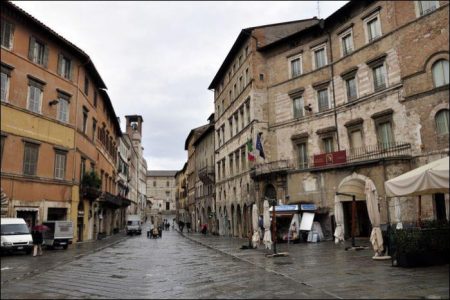Take a tour through one of the Italian capital’s oldest and most thriving cultural districts.
The history of Jews in Rome follows all the drastic twists and horrifying turns that have shaped the experience of the Jewish diaspora across the world. There has been a Jewish quarter inside the city ever since the Roman Republic began to engage in trade with the Levant in the couple of centuries before Jesus Christ. The subsequent millennia have seen massacres, apostasies and truces; bouts of intense persecution have been succeeded by periods of tolerance by, and even alliance with, the state. So if the story of the Roman Jews is relatively little told, it’s not for want of incident.
One reason may be their relatively small population – 13,000 Jews live in Rome today, compared with London’s 170,000 or New York’s 1.75 million – and, consequently, Italy’s fairly minor involvement in the defining event of recent Jewish history: the Holocaust. And yet, if nothing on the scale of what happened in Germany or Poland, Rome witnessed some horrors. The Nazis invaded Italy in September 1943 after the capitulation of Mussolini’s regime, and within a month they had smashed inside Rome’s Jewish quarter and started rounding up its inhabitants. By the war’s end, the city’s Jewish community had been literally decimated, having lost one in ten of its members to the concentration camps.
Calm in the chaos
A smattering of memorial plaques for the dead interrupt the peace in the otherwise placid Jewish quarter of today. Situated just across from the Tiber Island on the east bank of the river, the area is a haven of tranquillity in the traffic maelstrom that is Rome. Residential courtyards branch off from the slender alleys that tie the neighbourhood’s bustling marketplaces to its dainty piazzas. Like other historically Jewish districts in Europe’s capitals, such as London’s East End and Paris’ Marais, it has shed its cramped ghetto layout and gone the way of gentrification – losing many of its Jewish inhabitants in the process.
Inside Kiryat Sefer (‘The City of Books’) [no website], a bookstore specialising in Jewish culture, a tome on display compares the plan of the ghetto circa 1850 with a map of the area as it is today. The difference is striking. After Italy was unified in 1870, the new monarchy annulled the requirement for Jews to live in the ghetto, and set about razing the area.
The wall surrounding the ghetto was torn down and the cramped labyrinth of cul-de-sacs and tenement houses was replaced by four simple blocks of thoroughfares and squares. Where once the city’s poorest lived in abominable conditions, today a one-bedroom apartment sells for half a million euros. Streets that formerly belonged to drapers and fishermen now attract the likes of Jamie Oliver and Mark Zuckerberg (who, after dining at the neighbourhood’s renowned Nonna Betta restaurant, famously left no tip).
Kosher character
Many Jews may have sold up and moved out, but enough locals remain for the area to retain a distinctive character. Strolling down its flagstoned lanes, you’re just as likely to overhear snatches of Giudeo-romanesco, an antiquated local dialect that borrows liberally from Hebrew, as you are a conversation in Italian. A visit to the famous Boccione [no website], self-styled ‘bakery of the ghetto’, yields myriad delights of Hebraic provenance: unleavened tarts, marzipan cakes studded with fruit, and the three wonderfully taciturn sisters who run the place. Even the local sushi joint, Daruma, eschews all fish without spines in accordance with kosher tradition. If you’re pining for prawn, move on.
And then there’s the Great Synagogue of Rome [no website], another product of the late 19th-century government’s regeneration project. The squat domed edifice sits astride the riverbank, its striking appearance boldly proclaiming the Jews’ freedom to build as they see fit. Sadly, its symbolic importance has turned it into a flashpoint for anti-Semitic violence: in 1982, a gang of Palestinian militants marched up to the entrance and sprayed the congregation with grenades and submachine fire, killing one and wounding dozens. One legacy of the attack is a network of security guards who keep watch over the area from their discreet booths. Their presence is a dismaying reminder of the tensions with which the Jews of Rome continue to live, even in their most peaceful time.
Secrets revealed
For an area that abounds in beautiful architecture and tourist hotspots, the Jewish quarter is often neglected by visitors who come to Rome for its classical landmarks. Which is inexcusable, given that you can cover the neighbourhood’s cultural gems in a matter of hours – from the famous (and frankly kitsch) Turtle Fountain to the surreal ruins of the Porticus Octaviae. It’s well worth getting to know this unjustly overlooked patch of Italy.
Views: 324




